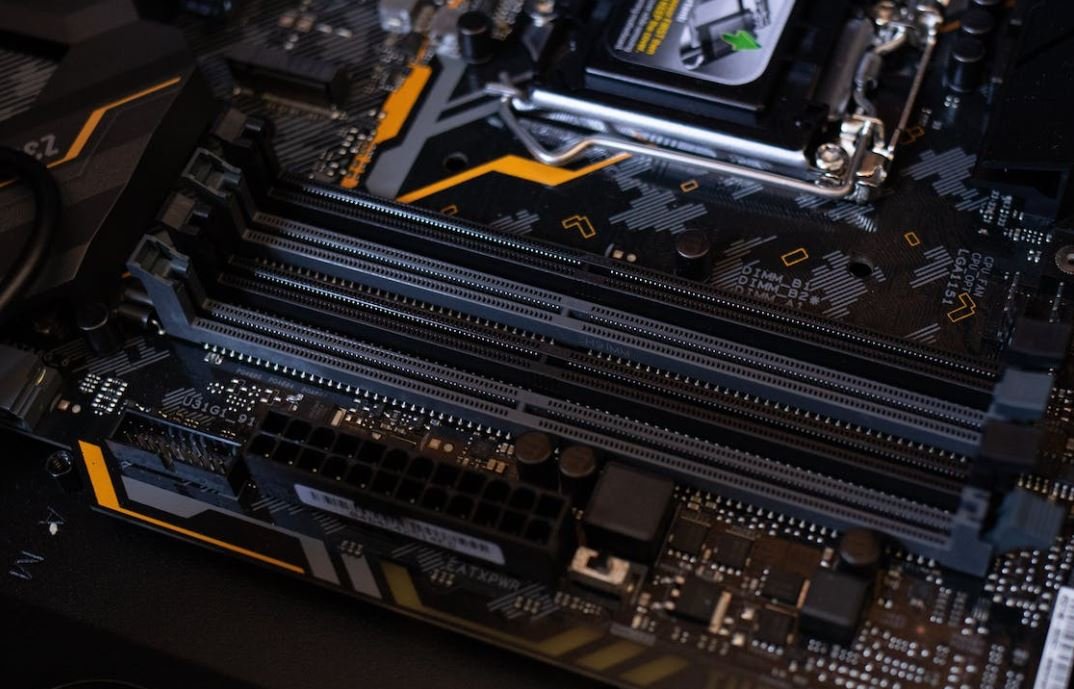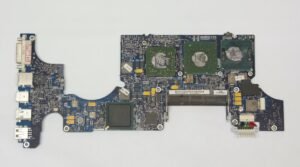How to Charge Tesla Model S
Charging your Tesla Model S is an essential part of owning an electric vehicle. With proper charging, you can ensure your car has enough power to take you wherever you need to go. Understanding the charging options available to you and knowing how to optimize your charging process will help you make the most of your Tesla driving experience. In this article, we will discuss various charging methods, charging times, and tips to optimize charging for your Tesla Model S.
Key Takeaways:
- Understanding different charging methods: Superchargers, Wall Connectors, and Mobile Connectors.
- Charging times for different charging options.
- Optimization tips for efficient and convenient charging.
1. Supercharging
Superchargers are Tesla’s proprietary high-speed charging stations strategically located along highways and popular travel routes. These chargers can replenish your Tesla Model S battery at a much faster rate than other charging options, allowing you to travel long distances with ease.
Superchargers enable you to charge up to 80% of your battery in approximately 30 minutes.
Benefits of Supercharging:
- Rapid charging speeds.
- Conveniently located along highways.
- Usually free for Tesla owners.
2. Wall Connector
Wall Connectors are professionally-installed charging stations that provide faster charging times than standard electrical outlets. These chargers can be installed in your garage or parking area, making charging at home convenient and hassle-free.
A Wall Connector can provide up to 44 miles of range per hour of charging.
Advantages of Wall Connector:
- Faster charging than standard outlets.
- Convenient for overnight charging at home.
- Customizable charging power to suit your needs.
3. Mobile Connector
Mobile Connectors are the standard charging cables provided when you purchase a Tesla Model S. These cables can be plugged into standard electrical outlets, allowing you to charge your car wherever an outlet is available.
Using a standard electrical outlet, the Mobile Connector can charge your Tesla at a rate of approximately 3-4 miles per hour.
Benefits of Mobile Connector:
- Flexibility to charge anywhere with a standard outlet.
- Portable and convenient for travel.
- A backup charging option when other options are not available.
Charging Times Comparison:
| Charging Method | Approximate Charging Time for 100 miles of range |
|---|---|
| Supercharger | 15 minutes (80% charge) |
| Wall Connector | 2.5 hours (44 miles of range per hour) |
| Mobile Connector | 24-32 hours (3-4 miles of range per hour) |
Optimization Tips:
- Take advantage of Superchargers for long-distance travel and quick charging needs.
- Install a Wall Connector at home for faster charging during overnight or extended parking.
- Plan your charging schedule to take advantage of off-peak electricity rates, if available.
- Utilize Tesla’s mobile app to monitor charging progress and receive alerts.
- Use range mode to conserve energy and increase overall driving efficiency.
Conclusion
In conclusion, understanding the different charging methods available for your Tesla Model S is crucial for maximizing your driving experience and ensuring convenient and efficient charging. Whether you rely on Superchargers for long-distance travel or opt for a Wall Connector for home charging, following the optimization tips provided will help you make the most of your charging capabilities. So go ahead and enjoy your Tesla Model S while keeping it charged and ready for your next adventure!

Common Misconceptions
Misconception 1: Charging a Tesla Model S is Expensive
One common misconception about charging a Tesla Model S is that it is expensive. While it is true that the initial cost of purchasing a Tesla can be higher than traditional gas-powered cars, the long-term savings in fuel costs can offset this expense.
- Tesla offers free unlimited Supercharging for some models and regions.
- Charging at home with a Tesla Wall Connector is usually more cost-effective than refueling a gas-powered car.
- Public charging stations are becoming more common and affordable.
Misconception 2: Charging Takes a Long Time
Another misconception is that charging a Tesla Model S takes a long time. While it is true that charging times can vary depending on the charging method and available power, there are ways to significantly reduce the charging time.
- Using a Tesla Supercharger can charge your Model S up to 80% in around 30 minutes.
- Installing a Tesla Wall Connector at home allows for faster charging than using a standard electrical outlet.
- Planning your trips and making use of charging stations along your route can minimize charging time.
Misconception 3: Charging Infrastructure is Limited
Some people believe that the charging infrastructure for electric cars, including Tesla Model S, is limited and inconvenient. However, the charging network for electric vehicles is continuously expanding, making it easier for Tesla owners to find charging stations.
- Tesla has its own extensive Supercharger network that spans across many countries.
- Public charging stations are becoming more prevalent, including both Level 2 chargers and fast chargers.
- There are also third-party apps and websites that help Tesla owners locate and navigate to nearby charging stations.
Misconception 4: Charging Every Day is Necessary
One misconception is that Tesla Model S owners need to charge their vehicles every day. However, the range of a Tesla can often cover the average daily driving needs of most individuals, making daily charging unnecessary for many.
- The range of a Tesla Model S can vary based on the battery size and driving conditions, but it typically covers several hundred miles on a single charge.
- Charging overnight at home can provide enough range to cover daily commutes without the need for additional charging during the day.
- Charging is recommended when the vehicle has around 20% to 30% battery remaining to optimize battery health.
Misconception 5: Home Charging Installation is Complex
Another misconception is that installing a home charging setup for a Tesla Model S is complex and costly. In reality, Tesla provides resources and support to make the installation process seamless.
- Tesla offers a range of home charging options, including the Tesla Wall Connector, and provides detailed installation guides and support.
- If you have an existing electrical outlet near your parking space, you can use the included Mobile Connector for home charging.
- Installation usually requires a licensed electrician, but it is a straightforward process for most homes.

Charging Time Comparison
The table below compares the charging time for various charging options available for the Tesla Model S. The charging times mentioned are approximate and may vary based on factors such as battery level, charger power, and environmental conditions.
| Charging Option | Charging Time |
|---|---|
| Tesla Supercharger | 15-30 minutes |
| Tesla Wall Connector | 6-10 hours |
| Standard Household Outlet | 12-80 hours |
| Level 2 Charging Station | 4-8 hours |
| Level 1 Charging Station | 24-48 hours |
Cost of Different Charging Options
This table provides an overview of the approximate cost for different charging options available for the Tesla Model S. The costs mentioned are estimates and may vary based on electricity rates and time of use.
| Charging Option | Approximate Cost (per kWh) |
|---|---|
| Tesla Supercharger Network | $0.28 – $0.42 |
| Home Electricity (average) | $0.10 – $0.22 |
| Third-party Charging Stations | $0.15 – $0.30 |
| Time-of-Use Electricity Rates | Varies |
Charging Efficiency Comparison
This table compares the charging efficiency of different charging options available for the Tesla Model S. Efficiency can be influenced by factors such as charger type, battery level, and charging infrastructure.
| Charging Option | Efficiency Percentage |
|---|---|
| Tesla Supercharger | 90-95% |
| Tesla Wall Connector | 85-90% |
| Standard Household Outlet | 70-80% |
| Level 2 Charging Station | 80-90% |
| Level 1 Charging Station | 70-80% |
Charging Infrastructure Availability
The table below provides an overview of the availability of different charging infrastructures for the Tesla Model S. Availability may vary by location and updates to charging network.
| Charging Option | Availability |
|---|---|
| Tesla Supercharger Network | Wide availability |
| Tesla Destination Chargers | Hotels, restaurants, etc. |
| Third-party Charging Stations | Varies by location |
| Public Level 2 Chargers | Increasing availability |
| Home Charging Solutions | Accessible for most owners |
Environmental Impact Comparison
The table below compares the environmental impact of different charging options for the Tesla Model S. Environmental impact can be evaluated based on factors such as emissions during electricity generation and charging infrastructure development.
| Charging Option | Environmental Impact |
|---|---|
| Tesla Supercharger Network | Low emissions (renewable sources) |
| Tesla Wall Connector | Low emissions (grid mix) |
| Standard Household Outlet | Medium emissions (grid mix) |
| Level 2 Charging Station | Medium emissions (renewable sources) |
| Level 1 Charging Station | Medium emissions (grid mix) |
Charging Speed Comparison
The table below illustrates the charging speed of different charging options for the Tesla Model S. Charging speed may vary based on factors such as charger power, battery level, and charging infrastructure.
| Charging Option | Charging Speed (miles of range per hour) |
|---|---|
| Tesla Supercharger | Up to 300 miles |
| Tesla Wall Connector | Up to 52 miles |
| Standard Household Outlet | Up to 3 miles |
| Level 2 Charging Station | Up to 30 miles |
| Level 1 Charging Station | Up to 5 miles |
Charging Port Compatibility
The table below displays the charging port compatibility for various charging options available for the Tesla Model S. It is essential to ensure that the charger you are using is compatible with your vehicle’s charging port.
| Charging Option | Charging Port Compatibility |
|---|---|
| Tesla Supercharger | Tesla proprietary connector |
| Tesla Wall Connector | Tesla proprietary connector |
| Standard Household Outlet | Adapter required |
| Level 2 Charging Station | Adapter required |
| Level 1 Charging Station | Adapter required |
Charging Network Coverage
The table below provides an overview of the charging network coverage for different charging options available for the Tesla Model S. It is important to consider the charging infrastructure coverage at your desired destinations.
| Charging Option | Charging Network Coverage |
|---|---|
| Tesla Supercharger Network | Extensive network coverage |
| Tesla Destination Chargers | Selected locations |
| Third-party Charging Stations | Varies by location |
| Public Level 2 Chargers | Increasing network coverage |
| Home Charging Solutions | Personal charging network |
Conclusion
In today’s rapidly evolving electric vehicle market, knowing how to efficiently charge your Tesla Model S is crucial. By evaluating factors such as charging time, cost, efficiency, availability, environmental impact, and charging speed, you can make informed decisions about the most suitable charging options for your needs. Additionally, considering charging port compatibility and charging network coverage ensures a seamless charging experience. Take advantage of the diverse charging options available to power your Model S, and join the growing community of emissions-free driving enthusiasts.
Frequently Asked Questions
How do I charge my Tesla Model S at home?
To charge your Tesla Model S at home, you can use a standard 120-volt outlet or install a 240-volt home charging station. Simply plug in the charging cable to your car’s charging port and connect the other end to the power source.
What is the charging range of a Tesla Model S?
The charging range of a Tesla Model S may vary depending on the battery size and drivetrain configuration. On average, a fully charged Model S can travel between 250 to 370 miles before requiring another charge.
Can I charge my Tesla Model S at public charging stations?
Yes, you can charge your Tesla Model S at public charging stations. Tesla has its own extensive Supercharger network, and there are also other third-party charging stations available. You can use the Tesla mobile app or navigation system to locate nearby charging stations.
How long does it take to fully charge a Tesla Model S?
The charging time for a Tesla Model S depends on the charging method and the battery size. Using a Supercharger, you can charge the battery to 80% in approximately 40 minutes. A full charge from a standard home outlet may take around 10-12 hours.
Can I use a generator to charge my Tesla Model S?
While it is technically possible to use a generator to charge your Tesla Model S, it is not recommended. Generators often produce unstable power quality and can potentially damage the car’s charging system. It’s best to use a reliable power source or seek professional guidance.
Does the Tesla Model S come with a charging cable?
Yes, the Tesla Model S comes with a charging cable that can be used for both home charging and public charging stations. The cable is compatible with standard outlets and includes adapters for different charging standards.
Can I charge a Tesla Model S in extreme weather conditions?
Tesla vehicles, including the Model S, are designed to withstand various weather conditions. However, extremely cold weather may reduce the battery’s efficiency and range. It is recommended to park the car in a garage or use a thermal blanket to aid in maintaining optimal battery performance during extreme weather.
Is it safe to leave my Tesla Model S charging overnight?
Yes, it is generally safe to leave your Tesla Model S charging overnight. Tesla’s charging system is designed to automatically stop charging when the battery reaches full capacity. However, it is always advisable to ensure proper ventilation and follow Tesla’s charging guidelines.
Can I charge my Tesla Model S using renewable energy sources?
Yes, you can charge your Tesla Model S using renewable energy sources such as solar panels or wind turbines. Tesla provides Powerwall and Powerpack solutions that enable storing renewable energy for later use, ensuring sustainable charging for your vehicle.
Can I use third-party charging cables to charge my Tesla Model S?
While it is possible to use third-party charging cables with a Tesla Model S, it is recommended to use cables and adapters provided by Tesla. Tesla’s own charging equipment is specifically designed and tested to ensure compatibility and safety with their vehicles.




